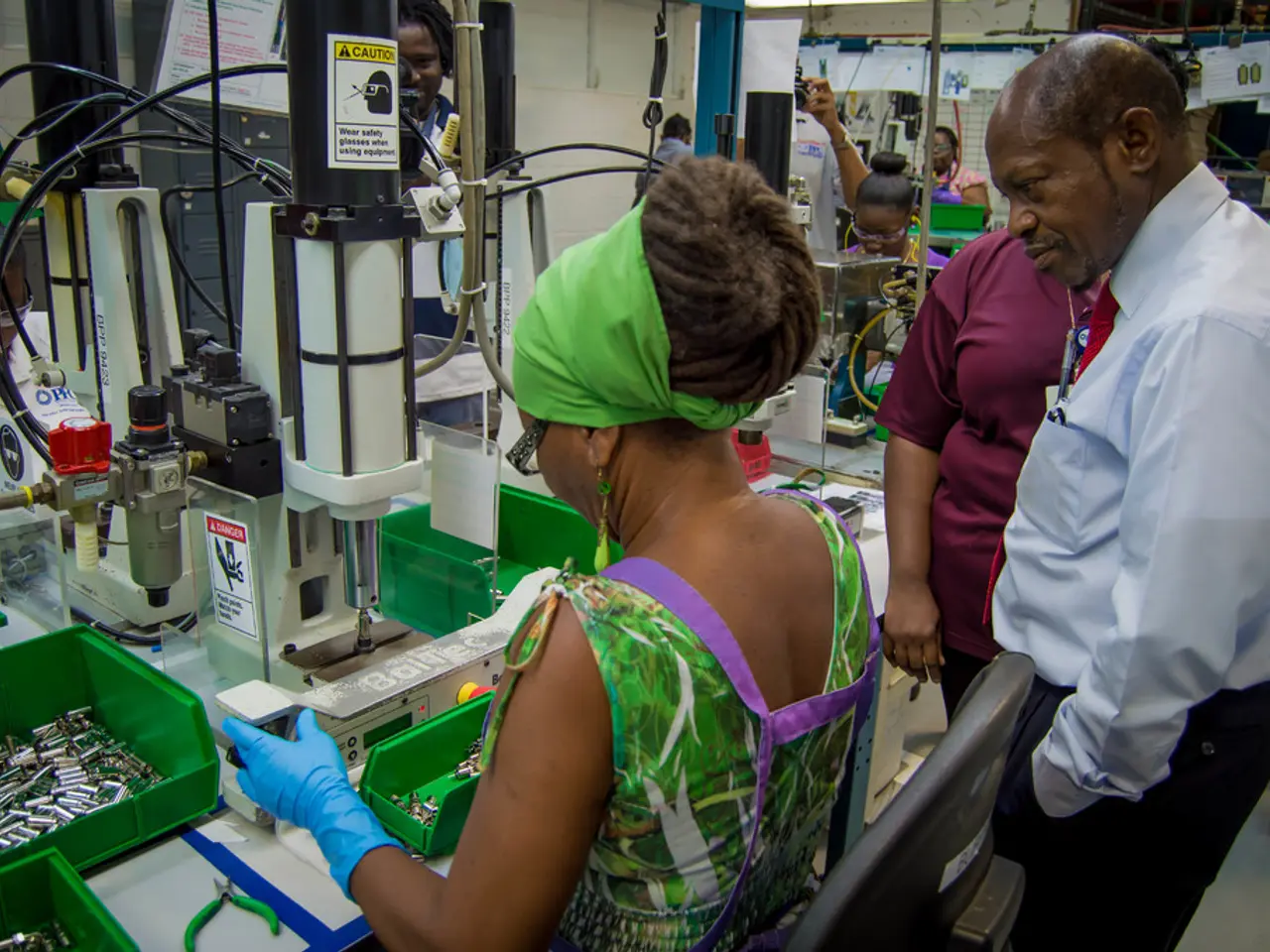Evolution of Global Trade Networks: EmergingPatterns Revolutionizing International Commerce
The global supply chain is undergoing a significant transformation, with the integration of Artificial Intelligence (AI) and Machine Learning (ML) technologies playing a pivotal role. This evolution, known as predictive analytics, is set to revolutionize the way businesses operate in the international trade sector.
Predictive analytics provides an exceptional ability to forecast demand, allowing global distributors to reduce waste and minimize stockouts. By analysing factors such as seasonal trends, real-time data, weather patterns, and the impact of promotions, businesses can predict shifts in the market, identify growing demand, and make data-centric strategic decisions, building a strong competitive edge.
One key area where predictive analytics makes a significant impact is demand forecasting and sales pattern recognition. Machine learning analyses vast data to improve base forecasts and highlight trends or exceptions. However, its accuracy depends on quality data governance and integration with processes like Sales Inventory Operations Planning (SIOP).
AI models are also used to predict disruptions such as geopolitical tensions, regulatory changes, or transportation delays. By analysing global news, economic reports, climate data, and social trends, these models can foresee supply chain disturbances and optimise routing, sourcing, and production reallocation proactively.
Predictive systems also determine the best transport modes and routes based on multiple variables such as driver availability, cost, and service levels, improving on-time delivery and reducing costs. Furthermore, AI-driven robotic process automation on warehouse floors addresses labour shortages and boosts productivity by handling repetitive tasks.
Looking into the future, predictive analytics will continue to transform supply chains by enhancing resilience and sustainability. By anticipating disruptions early, companies can respond faster to geopolitical events and regulatory shifts with alternative sourcing and logistics strategies, mitigating risks and costs.
Leveraging structured and unstructured data from multiple sources, predictive analytics will enable more precise “forecast, anticipate, and respond” strategies, driving optimised production, inventory, and distribution decisions. The adoption of AI will grow rapidly, becoming a critical digital investment for supply chains aiming to thrive amid uncertainty.
Advanced analytics may also help monitor environmental impacts, compliance with labour laws, and ethical sourcing, aligning with increasing regulatory and consumer demands. The future of international trade will focus on adaptability, transparency, and sustainability, moving away from a primary focus on efficiency.
Blockchain technology improves traceability, transparency, confirms the authenticity, and streamlines compliance by providing a tamper-proof record for every product from sourcing to final distribution. Robotics and automation simplify operations, reduce human errors, and enhance efficiency in warehouses, last-mile delivery, and administrative tasks.
In summary, predictive analytics powered by AI and ML is set to revolutionize global supply chains by enabling proactive management of risks and opportunities. Its continued evolution will be pivotal for supply chains navigating growing complexity and global volatility, offering companies competitive advantages in international trade through better forecasting, agility, cost-efficiency, and sustainability.
- The integration of Artificial Intelligence (AI) and Machine Learning (ML) technologies in the global supply chain, through predictive analytics, empowers businesses to make data-centric strategic decisions, thereby creating a competitive edge in global trade and investing.
- In demand forecasting and sales pattern recognition, Machine learning utilizes vast data to enhance predictions and identify trends, fostering a more efficient and accurate business operation within the supply chain and lifestyle.
- The use of AI in predicting disruptions such as geopolitical tensions, regulatory changes, or transportation delays allow for proactive optimisation of routing, sourcing, and production reallocation, ultimately enhancing a business's ability to remain adaptable and sustainable in the face of global trade and finance challenges.




